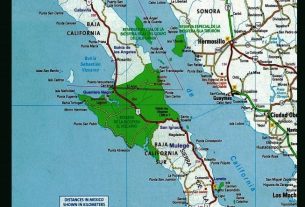By Baja Amigos from the May 2017 Edition
February 11-14, 2016 (Day 36-39)

This morning we departed southbound from the Pal Mul RV Park for Ciudad Chetumal, about a 5 hour drive, still on the Caribbean, but with a lot fewer tourists. Hwy 307 was wonderful, good pavement and plenty wide, lots of 4 lanes as well.

Our journey took us thru some small villages into Chetumal. The campground, Yax Ha Resort is located just north of Chetumal on Calderitas Bay. This was an easy drive and we were very impressed with this campground. No sandy beach, however good water access, lots of coconut palm trees and grass, a great, inexpensive restaurant, showers and washrooms were clean, pool, wifi and laundry; we could even purchase purified water at the park.
After set up we organized a happy hour, then dinner for some at the restaurant. We were able to catch up  on lots of wifi. Tomorrow, with help from all the Baja Amigos, we will get the SUP and kayak off the van and into the water. The next day was a little windy but we still managed to take the kayak off the roof and put it in the ocean lagoon. Only Dan and Rafael took the boat out, but mostly, on the first full day at the park, we just kicked back and hung out, no excursions planned. Mike installed the new motor he received from the trailer manufacturer that had been couriered to Cancun for his slide and the gals organized our first potluck dinner which was fantastic.
on lots of wifi. Tomorrow, with help from all the Baja Amigos, we will get the SUP and kayak off the van and into the water. The next day was a little windy but we still managed to take the kayak off the roof and put it in the ocean lagoon. Only Dan and Rafael took the boat out, but mostly, on the first full day at the park, we just kicked back and hung out, no excursions planned. Mike installed the new motor he received from the trailer manufacturer that had been couriered to Cancun for his slide and the gals organized our first potluck dinner which was fantastic.
Our 2nd day here was Saturday and we headed into Chetumal in search of the local mercado. Our excursion started with a very scenic drive on an oceanside road along the shores of town where made a couple of stops including a photo op with the group at the newly-installed sign for Chetumal.
 We found the town very relaxed, with wide roads and few crazy drivers which was a real departure from many of the larger cities we had encountered to date on the trip. We found the local mercado, next to a museo about Mayans and nearby many small eateries.
We found the town very relaxed, with wide roads and few crazy drivers which was a real departure from many of the larger cities we had encountered to date on the trip. We found the local mercado, next to a museo about Mayans and nearby many small eateries.
We enjoyed our tour of the market, purchased a few items, and later Mike and Kelly joined us for lunch at a taco stop on the sidewalk. After we collected up the gang, we decided to drive to the Belize border to see what that was all about. We discovered that Mexico and Belize had set up a free zone, where you could cross with valid passports and shop duty free. Most did not have their passports so we decided to visit the next day.
 Later that evening, Rafael and I met with Jorge, Fina and Tio Ricardo Jimenez who had dropped by to meet us. Bety (Antonio and Bety from Bahia de Los Angeles) had contacted us and told us her brother and sister-in-law lived in Chetumal, gave us his number and suggested we contact him. As it turns out, her Uncle Ricardo was visiting from the US and came along as well. We really enjoyed meeting everyone particularly from Bety’s family, great folks for sure.
Later that evening, Rafael and I met with Jorge, Fina and Tio Ricardo Jimenez who had dropped by to meet us. Bety (Antonio and Bety from Bahia de Los Angeles) had contacted us and told us her brother and sister-in-law lived in Chetumal, gave us his number and suggested we contact him. As it turns out, her Uncle Ricardo was visiting from the US and came along as well. We really enjoyed meeting everyone particularly from Bety’s family, great folks for sure.
Sunday was Valentine’s Day and we off to the Belize free zone with passports in hand and then a scheduled swim at Bacalar Lagoon, Laguna de los Siete Colores (Lagoon of the Seven Col- ours). The name comes from the fact that the shallow lake has a very light coloured bottom and, as the day moves along, the colour of the water changes as with this reflecting sky.
When we got to the border, we parked and went directly to the Mexican immigration station at the entrance 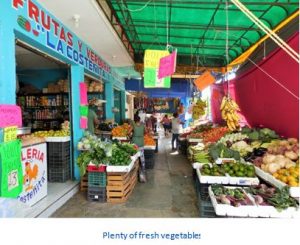 to the Belize free zone. Now we were asked for our Mexican tourist cards, not just our passport as earlier informed. Some folks had them, others were not willing to give them up. Suddenly we had option B, as the Mexican immigration officer asked for $50 pesos each to venture across into Belize. The group quickly decided this was a way too sketchy a process and we had gone no- where. What was it going to be like when we had to re-enter Mexico after visiting the free zone we asked ourselves? Us in Belize and our RVs in Mexico with no tourist cards? I do not think so!
to the Belize free zone. Now we were asked for our Mexican tourist cards, not just our passport as earlier informed. Some folks had them, others were not willing to give them up. Suddenly we had option B, as the Mexican immigration officer asked for $50 pesos each to venture across into Belize. The group quickly decided this was a way too sketchy a process and we had gone no- where. What was it going to be like when we had to re-enter Mexico after visiting the free zone we asked ourselves? Us in Belize and our RVs in Mexico with no tourist cards? I do not think so!
All righty then, we were off to our swimming appointment at the Bacalar Lagoon (Bacalar was named a “Pueblo Mágico” in 2006). When we arrived, it did not take long until we found a nice spot, very inexpensive, both to park and the entry fee which included a swimming dock, 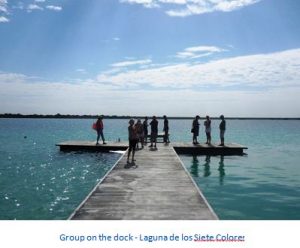 restaurant, tables and chairs, change rooms, washrooms, even some shopping. Most had a good swim, very refreshing, had a bite to eat, and headed back to the RV Park in the early afternoon.
restaurant, tables and chairs, change rooms, washrooms, even some shopping. Most had a good swim, very refreshing, had a bite to eat, and headed back to the RV Park in the early afternoon.
Time to pack up the kayak and other items then prepare for our group Valentine’s dinner organized by Marian and Anita down the street. Prior to our departure, Roland had a Valentine for all the gals. Definitely a nice touch. Thank you Roland!
We sat on the patio outside on the water side and it was sea- food all around. I had a shrimp dish that was very tasty and in- expensive. It was a memorable Valentine’s dinner. We would return to both this region and RV Park if given the opportunity, lots to see and do here without the steady stream of tourist traffic.
Chetumal (Modern Maya: Chactemàal, “Place of the Red Wood”) is a city on the east coast of the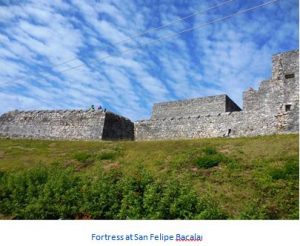 Yucatán Peninsula in Mexico and capital of the state of Quintana Roo with a population of under 200,000. The city is situated on the western side of Chetumal Bay, near the mouth of the Río Hondo and an important port for the region and operates as Mexico’s main trading gateway with the neighboring country of Belize. Goods are transported via a road connecting Chetumal with Belize City to the south, and also via coastal merchant ships.
Yucatán Peninsula in Mexico and capital of the state of Quintana Roo with a population of under 200,000. The city is situated on the western side of Chetumal Bay, near the mouth of the Río Hondo and an important port for the region and operates as Mexico’s main trading gateway with the neighboring country of Belize. Goods are transported via a road connecting Chetumal with Belize City to the south, and also via coastal merchant ships.
There is a commercial airport, Chetumal International Airport, with airline service. Because of its location on the Caribbean coastline, it is vulnerable to tropical cyclones; two (2) hurricanes in the 1940s leveled the entire town; followed by Hurricane Janet in 1955 which did the same. The town was subsequently rebuilt using a lot more concrete than wood and fared much better with Hurricane Dean, also a Category 5 storms, which made landfall near Chetumal in 2007.
History of Chetumal

In Pre-Columbian times, a city called Chactemal (Chetumal), probably today’s Santa Rita in Belize, was the capital of a Maya state of the same name that roughly controlled the southern quarter of modern Quintana Roo and the northeast portion of Belize. This original Chetumal is now believed to have been on the other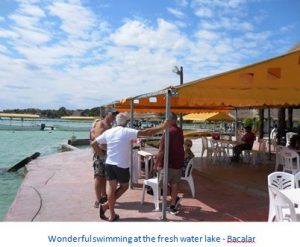 side of the Río Hondo, in modern Belize, not at the site of modern Chetumal. Bacalar was a city of the Maya civilization in Pre-Columbian times.
side of the Río Hondo, in modern Belize, not at the site of modern Chetumal. Bacalar was a city of the Maya civilization in Pre-Columbian times.
This was the first city in the region which the Spanish Conquistadores succeeded in taking and holding in 1543. In 1545, Gaspar Pacheco established the Spanish town here with the name Salamanca de Bacalar. The region of the southern half of what is now Quintana Roo was governed from Bacalar, answerable to the Captain General of Yucatán in Mérida.
During the Spanish conquest of Yucatán, the Maya state of Chetumal fought off several Spanish expeditions before finally being subjugated in the late 16th century. However, the development of the sugar plantations, including the expansion towards the east, at the expense of Indian communal lands, causes the impoverishment and the displacement of the Mayan population, which nevertheless was still forced to pay tithes and taxes, and carry out harsh work on the lands belonging to the whites.
The situation reached such a degree that the Mayans believe that rebellion is the only way of saving their traditional means of subsistence and autonomy. Following the arrest and execu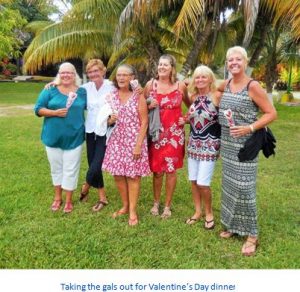 tion of the indigenous leader Manuel Antonio Ay, the Mayans rose up against the government of Yucatán. The 1840s revolt of the indigenous Maya peoples against Mexican rule, known as the Caste War of Yucatán, drove all the Hispanic people from this region; many settled in British Honduras (modern day Belize).
tion of the indigenous leader Manuel Antonio Ay, the Mayans rose up against the government of Yucatán. The 1840s revolt of the indigenous Maya peoples against Mexican rule, known as the Caste War of Yucatán, drove all the Hispanic people from this region; many settled in British Honduras (modern day Belize).
On 30 July 1847 the rebel forces, led by Cecilio Chi, overran and destroyed the village of Tepich, and neither negotiation nor military repression succeeded in curbing the relentless rebel advance. Soon, two thirds of the peninsula, including the whole of the east and Bacalar, are in the hands of the insurgents. By May 1848, the Mayan forces are positioned in the ports of Mérida, creating panic amongst the inhabitants, but the dreaded final attack never materialized.
With the coming of the rains, many Indians abandoned their offensive and returned to their communities to cultivate the land. The governmental forces do not hesitate to counter- attack, retaking the main cities and 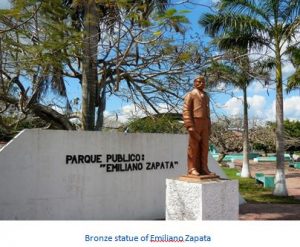 forcing the Mayans to with- draw towards the jungle. The internal divisions and the death of the main leaders culminated in fragmenting the Mayan power in three groups: those from the east, independent and rebellious; those from the south, independent and peaceable; and the rest, the majority, peaceable and submissive.
forcing the Mayans to with- draw towards the jungle. The internal divisions and the death of the main leaders culminated in fragmenting the Mayan power in three groups: those from the east, independent and rebellious; those from the south, independent and peaceable; and the rest, the majority, peaceable and submissive.
The current site of Chetumal was established as a Mexican port town in 1898, originally under the name Payo Obispo, later the name was officially changed to Chetumal in 1936.
Chetumal today
Without question, Chetumal’s economy has been influenced by its proximity to the border with Belize. A goods and services tax free zone (Corozal Free Zone) established on the Belizean side attracts many visitors to Chetumal and also provides a ready market for Chetumal’s retailers and traders (this is where we wanted to visit). However, a certain vacuum was created by the lower free zone prices forcing many Chetumal retailers to close their doors. Merchandise bought elsewhere was hard to sell at higher prices than the competition.

The current site of Chetumal was established as a Mexican port town in 1898, originally under the name Payo Obispo, later the name was officially changed to Chetumal in 1936.
Chetumal today
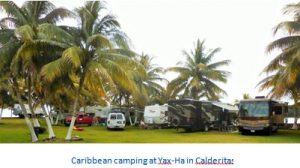 Without question, Chetumal’s economy has been influenced by its proximity to the border with Belize. A goods and services tax free zone (Corozal Free Zone) established on the Belizean side attracts many visitors to Chetumal and also provides a ready market for Chetumal’s retailers and traders (this is where we wanted to visit). However, a certain vacuum was created by the lower free zone prices forcing many Chetumal retailers to close their doors. Merchandise bought elsewhere was hard to sell at higher prices than the competition.
Without question, Chetumal’s economy has been influenced by its proximity to the border with Belize. A goods and services tax free zone (Corozal Free Zone) established on the Belizean side attracts many visitors to Chetumal and also provides a ready market for Chetumal’s retailers and traders (this is where we wanted to visit). However, a certain vacuum was created by the lower free zone prices forcing many Chetumal retailers to close their doors. Merchandise bought elsewhere was hard to sell at higher prices than the competition.
Chetumal itself was also once a free zone and a notable destination for people from other parts of Mexico seeking to pur- chase high-value and bulk goods, free of government duty charges (a policy that was 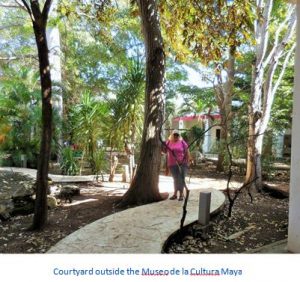 deliberately implemented to attract this business). The city retains a significant retail trade for the region, which supports many local businesses.
deliberately implemented to attract this business). The city retains a significant retail trade for the region, which supports many local businesses.
A large indoor mall, the Plaza de las Américas, houses a modern movie theater (which belongs to the Mexican chain Cinépolis), various department store chains, fastfood outlets, and a Chedraui supermarket. In addition to its retail economy, Chetumal is also the capital of the state of Quintana Roo. Since it is the location of all of the state’s central offices, there is a large population of government employees whose consumption of local goods and services injects additional revenue into the Chetumal economy. As Capital of the state, Chetumal receives a good share of the foreign currencies brought in by the considerable floating population composed of European, Asian and other North American tourists.
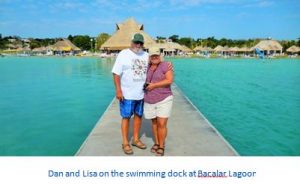 The city has a music school which offers lessons of various instruments as well as music theory and history. The school is the main music school of the state and is the home of the Junior Symphonic Orchestra of the state Quintana Roo (“Orquesta sinfonica juvenil del estado de Quintana Roo”) which is directed by Silvia Alcántara Chavero. The city houses two theaters. The “Teatro Minerva”, which is an open air theater and belongs to the state’s music school, and the “Teatro Constituyentes”, which is a private owned theater. There is a country club, which features tennis, football and basketball courts, a gym, a swimming pool, a steam-bath and a lounge for parties. In the early 1990s, the University of Quintana Roo was established at Chetumal, providing training and advanced tertiary degrees over a range of subjects.
The city has a music school which offers lessons of various instruments as well as music theory and history. The school is the main music school of the state and is the home of the Junior Symphonic Orchestra of the state Quintana Roo (“Orquesta sinfonica juvenil del estado de Quintana Roo”) which is directed by Silvia Alcántara Chavero. The city houses two theaters. The “Teatro Minerva”, which is an open air theater and belongs to the state’s music school, and the “Teatro Constituyentes”, which is a private owned theater. There is a country club, which features tennis, football and basketball courts, a gym, a swimming pool, a steam-bath and a lounge for parties. In the early 1990s, the University of Quintana Roo was established at Chetumal, providing training and advanced tertiary degrees over a range of subjects.
Chetumal main tourist sights Museums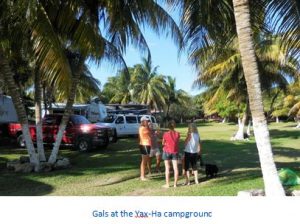
- Cultural Center of the Fine Arts (Centro Cultural de las Bellas Artes), located in the center of the city. The building is housed in what was the school Belisario Domínguez, which was the first school of Quintana
- Museum of the Mayan Culture (Museo de la Cultura Maya), considered the largest and most comprehensive museum in the state dedicated to the Mayan culture. It has an important collection of authentic and reproductions of classical works, and tells the development of Mayan culture, its origins, as well as various aspects of their daily
Museum of the City. Tied to the Cultural Center of the Fine Arts, dedicated to the exhibition of photographs, tools and documents that tell the story of the founding of the city.
Monuments
- Monument to the Flag (Monumento a la Bandera), the first monument built in Chetumal. It consists of a
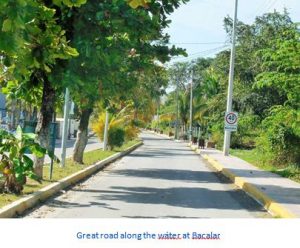 white obelisk that has a clock dial on each of its
white obelisk that has a clock dial on each of its - Cradles of the Meztizaje (Monumento Cuna del Meztizaje), constructed in the entrance of Chetumal. It has the form of a Mayan pyramid on which are the statues of Gonzalo Guerrero, his wife Zazil Há and the children of
- Andrés Quintana Roo Memorial, dedicated to Andrés Quintana Roo, whom the state was named
- Monument to the Fishermen, one of the most recent, located in the Bay of
Parks
- Ecological Park (Parque Ecológico)
- Cheese Park
- Biouniverzoo Zoo



Download the full edition or view it online
BAJA AMIGOS RV Caravan Tours, offers tours in January, February and March as well as in November through mid-December. Tours begin at the US/Mexico border descending down the Mexican Baja to Cabo San Lucas and return. Tours are designed to provide a broad overview of the Baja experience for RVers seeking to return on their own or just experience what this magnificent peninsula to offer.


